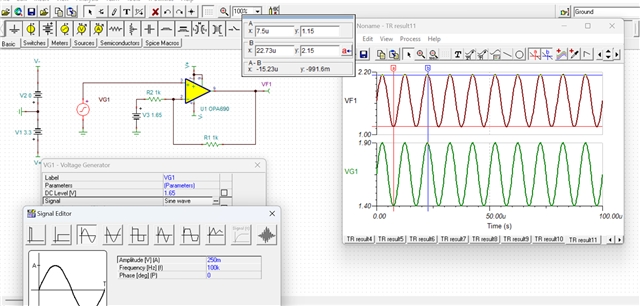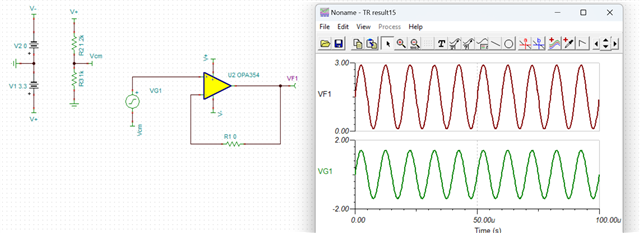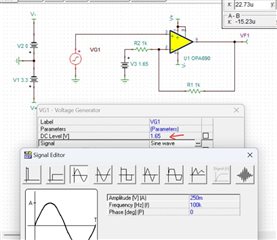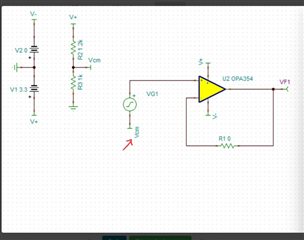Other Parts Discussed in Thread: TINA-TI, TLV3541, OPA357, OPA354
Tool/software:
Hi,
I’m currently designing a hardware comparator circuit that generates a fault signal to the MCU based on current thresholds. The input to this comparator comes from a Hall-effect current sensor, which outputs an analog signal that swings both positive and negative (approximately ±1.4 V peak).
Design Constraints:
-
The system does not have a negative power supply rail available.
-
I need to detect both positive and negative peak thresholds.
-
The comparator and signal conditioning must operate from a single positive supply (e.g., 0–3.3 V).
-
The comparator input range should be within ~0.1 V to 2.9 V (to allow margin inside a 3.3 V rail).
To address the lack of a negative rail, I used the OPA690 to add a DC offset, level-shifting the input signal such that the original ±1.4 V signal is shifted to ~0.1 V to 2.9 V.
-
This method worked fine in LTspice with generic components.
-
However, when I simulated the actual circuit in TINA-TI using the OPA690 model:
-
Without the negative supply connected to the OPA690, the output became erratic.
-
When I added the negative supply, the circuit performed as expected.
-
Solution Required:
-
Could you please suggest a better solution to design a hardware comparator for this requirement without needing a negative supply?
-
If the DC level-shifting approach with the OPA690 is viable, please help me understand:
-
Why does the circuit behave incorrectly without the negative rail?
-
Is there a way to modify the design so it works reliably on single-supply operation?
- One more issue i faced was the comparator outputs was not straight, and not constantly same. Is this issue because of op-amp input for the comparator?



-
I have attached the simulation waveforms for both cases (with and without negative supply). Kindly let me know if I’ve made any mistakes or missed any considerations.
Thank you for your time and guidance.







